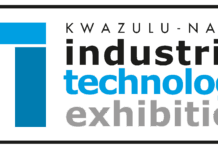By Paul Savides, Managing Director, PBS Machine Tools
Sir Isaac Newton’s phrase, “Standing on the shoulders of giants” highlights the collaborative nature of scientific and intellectual progress, where new insights are often derived from the accumulated knowledge of previous generations.
The Hawthorne Effect circa 1930 refers to the phenomenon, where individuals modify their behaviour or performance, simply because they are aware of being observed, and today we use camera’s i.e. AI.
Our machines are ergonomically designed, and robots are integrated to support operators, based on a study from 1953 that set guidelines for the recommended safe maximum weight for lifting at work.
In 2011, the German Research Alliance determined that the project Industry 4.0 be initiated with the aim of providing Cyber-Physical systems by 2020 and today, to be a Center for Manufacturing implies, embracing the 4th Industrial Revolution, powered by the internet because, the Internet of Things (IoT) establishes the bridge between both Virtual and Tangible Worlds.
Today’s Smart Factories are heterarchical, where the systems of the organization are unranked or can be restructured in different ways thus, becoming a flexible, dynamic factory.
The digital connectivity between all machines, tools, workpieces and factory workers already exists, thanks to the IIOT and Cyber-Physical Systems.
The introduction of the following six new Megatrends are:
- Industrial AI – The application of artificial intelligence to industrial settings, like manufacturing, energy and logistics to improve efficiency, productivity and decision-making.
- Edge Computing – A distributed computing paradigm, where data processing occurs closer to its source, typically at the “edge” of a network, such as a device or a local server.
- 5G
- Team Robotics – Those who collaborate on designing processes, programming and operating robots in the manufacturing environment.
- Autonomous Intralogistics AGV Systems – The planning, implementation and optimization of all internal material flows, information flows and goods handling within a company.
- Reliable Data Infrastructure
We have already reached the goal of having a Digital Twin image that, in real-time, automatically updates each Physical Object in the Process, interprets then, uses the data to alter Production by Condition Monitoring of Deviation through Adaptive Control Settings. While this is Digital Transformation (DX), now it’s time to embrace Sustainable Manufacturing.
Driving South Africa’s Manufacturing toward a Circular Economy, what are the challenges, opportunities and strategies we face?
As the global manufacturing sector accelerates toward net-zero and sustainable development, South African manufacturers face a series of critical questions, such as how can we implement circular economy practices in a resource-constrained environment, while balancing economic performance and environmental responsibility? Let’s explore the challenges, opportunities and actionable strategies that can help unlock South Africa’s potential on the path to a circular economy.
Challenges and Opportunities – Unlocking the Potential of the Used Equipment Market
For South Africa’s manufacturing sector, the transition to a circular economy presents several formidable challenges, including insufficient infrastructure, limited supply chain transparency and a lack of clear policy incentives. In addition, many traditional equipment manufacturers remain unfamiliar with the concepts of recycling and remanufacturing, slowing the adoption of circular practices. Particularly problematic is the disorganized used equipment market, which currently lacks standardization and certification frameworks, making businesses hesitant to participate.
Yet, this challenge also represents a significant opportunity. By restructuring the used equipment market and establishing standards and certification systems, manufacturers can promote equipment reuse, extend product life cycles and reduce waste generation. These are all essential pillars for embedding circular economy principles in South Africa’s manufacturing landscape.
Digital Transformation – The Core Driver of Sustainable Manufacturing
Digital transformation technologies are undoubtedly at the heart of advancing the circular economy and sustainable manufacturing. By integrating the Industrial Internet of Things (IIoT) and Artificial Intelligence (AI), manufacturers can comprehensively monitor energy consumption, implement predictive maintenance, optimize dynamic scheduling and even simulate production lines through Cyber-Physical systems (CPS) and digital twins to further enhance efficiency.
For example, in my specific industry, my supplier from Taiwan, Tongtai, has TLM, TIMS and Tioperator systems, which enable carbon footprint monitoring and the visualization of emissions data, thereby helping companies quickly identify carbon hotspots in their production processes. These digital tools not only enable real-time operational optimization but also empower companies to craft more precise carbon reduction strategies, significantly boosting sustainability outcomes.
Design-Driven Innovation – Crafting Products for Circularity
To successfully implement a circular economy, innovation at the design stage is just as critical. Manufacturers must first leverage carbon monitoring and production tracking systems to analyse resource inefficiencies and emission bottlenecks throughout design and production.
Based on these insights, they can adopt strategies, such as lightweight design by reducing material usage in casting processes to lower raw material consumption and energy use and component optimization by improving part configurations, transmission systems and cooling mechanisms to cut electricity use and reduce carbon emissions.
Strategies should also include AI applications to predict machining paths, optimize cutting parameters and even deploy vision-based technologies for automated chip removal, such as Tongtai’s AI FlexJet system and modular design, to ensure products are easy to dismantle and recycle at the end of their life cycle, supporting closed-loop production.
An Example from Design to Usage
Utilizing the functions and attributes of the 4th / 5th Industrial Revolution, my supplier was able to demonstrate, how a machine alarm is triggered before there is a potential crash.
Having professional design capability that integrates advanced mechanical and electrical designs through the Industrial Internet of Things (IIOT), allows customized solutions to enhance customer productivity needs and maximize machining efficiency.
Thanks to Tongai’s self-developed 3D Collision Prevention System, you can simply import 3D CAD files and CAM-generated programs to verify the machining path and ensure real-time 3D collision prevention. Additionally, the Machine Protection System keeps axis bearings and peripheral devices in check, preventing unexpected downtime.
A game-changer for our industry is Chip Jamming Anomaly Detection, which ensures tool balance stays optimal, so you won’t risk ruining expensive workpieces, due to chip build-up or faulty tools. This is smart, reliable and stress-free technology.
Even though the economic system in the world is in turmoil, making it more difficult to plan for growth and profitability, the manufacturing sector can make a difference by implementing advanced manufacturing technology.
The inputs required to make us world competitive are all inexpensive and easily obtainable to anyone who makes the effort to use and apply them.
For more information please contact PBS Machine Tools – Tel: 011 914-3360.









